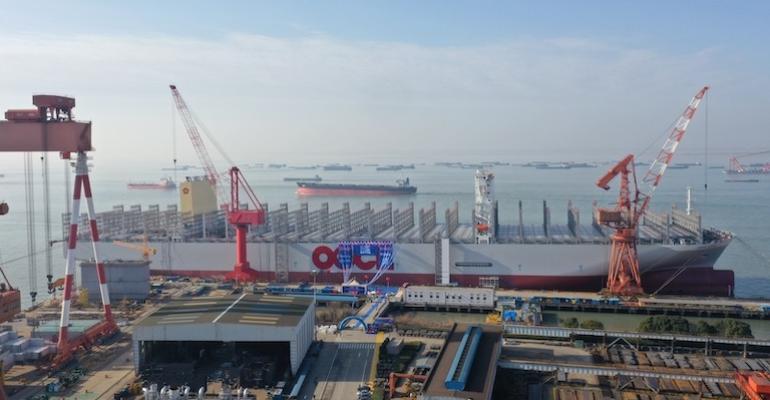Over the last three years, $93 billion has been invested in containerships, close to the record three-year period to December 2007 when owners shelled out more than $100 billion. Since the last quarter of 2019, Clarkson figures clock up contracts for 1,211 boxships, with a record of 612 in 2021 followed by 378 in 2022. However, a significant easing in ordering is evident this year, with only 59 new ships ordered so far.
While containerships came close to breaking that market’s previous investment record, LNG owners have well and truly smashed it in their sector, committing $73 billion to new ship spending, well over double the capital spent in any other previous three-year period. The earlier record stood in the three years to the end of 2015 when LNG investment in new ships had climbed to about $32 billion.
Clarkson has recorded 28 new LNG carrier contracts so far this year, compared with 184 in 2022. Experts point out that the relatively small number of shipyards specialising in LNG construction are practically full until 2027. Chevron has become first company to book ships for 2028 delivery, with two LNG carriers ordered at Samsung Heavy Industries last week.
But the LNG three-year total is 346 new contracts since June 2020, and LNG carriers on order are now equivalent to 51% of the existing fleet in capacity terms. The ordering spree has been underpinned by strong project sanctioning, with many other projects at various stages of development up to final investment decisions. Energy security worries and the development of plentiful LNG as a relatively clean hydrocarbon are also underpinning the record capital commitment.
Meanwhile, tanker and bulk carrier owners are holding back, with ordering in those two mainstream sectors accounting for just 23% of total investment. Today’s three-year rolling tanker total of $27 billion compares with more than $50 billion in 2015 and a record of more than $100 billion in 2008.
For bulkers, Clarkson noted that today’s $47 billion comes nowhere near the record three-year period, again in 2008, of more than $200 billion.
Copyright © 2024. All rights reserved. Seatrade, a trading name of Informa Markets (UK) Limited.
Add Seatrade Maritime News to your Google News feed.  |

